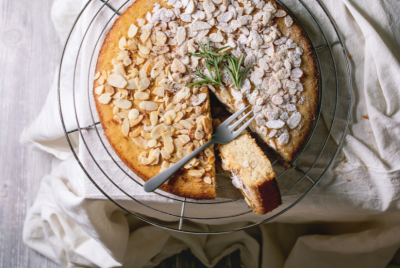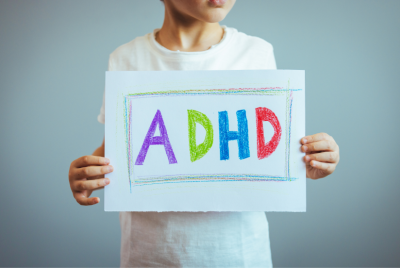What Foods Contain Gluten?
As an advisor for individuals with gluten intolerance and celiac disorder, I understand the importance of identifying what foods contain gluten and providing helpful suggestions for a gluten-free diet. In this article, we will explore what gluten is, its impact on those with gluten intolerance and celiac disorder, and discuss a variety of gluten-free food options to incorporate into your diet.
Introduction
Maintaining a gluten-free diet is essential for individuals with gluten intolerance and celiac disorder. Gluten, a protein found in wheat, barley, and rye, can trigger adverse reactions in people with these conditions. By understanding which foods contain gluten and identifying suitable alternatives, you can effectively manage your diet and lead a healthy, gluten-free lifestyle.
What is Gluten?
Gluten is a complex protein that provides elasticity and structure to dough, giving bread and other baked goods their characteristic texture. It is composed of two main proteins: gliadin and glutenin. While gluten is primarily found in wheat, it is also present in related grains such as barley and rye.
Gluten Intolerance and Celiac Disorder
Gluten intolerance refers to a broad spectrum of adverse reactions to gluten. The most severe form is celiac disorder, an autoimmune condition triggered by gluten ingestion. People with celiac disorder experience damage to the lining of the small intestine, leading to nutrient malabsorption and various health complications.
Foods Containing Gluten
To effectively manage a gluten-free diet, it is crucial to be aware of the foods that commonly contain gluten. Some primary sources of gluten include:
- Wheat: This grain is a significant source of gluten and is found in various food products such as bread, pasta, cereals, and baked goods.
- Barley: Barley is another grain that contains gluten and is commonly found in malt products, beer, and some types of soups.
- Rye: Rye is a grain closely related to wheat and contains gluten. It is often used in bread, rye whiskey, and certain cereals.
- Processed Foods: Many processed foods, such as sauces, dressings, and snack items, may contain hidden sources of gluten in the form of additives or fillers.
Gluten-Free Grains
Fortunately, there are several gluten-free grains that can be enjoyed as alternatives. These grains include:
- Rice
- Quinoa
- Corn
- Buckwheat
- Millet
- Amaranth
These grains provide a versatile base for various dishes and can be substituted for gluten-containing grains in recipes
Gluten-Free Fruits and Vegetables
Fruits and vegetables are naturally gluten-free and should be included in a balanced gluten-free diet. These nutrient-rich foods provide essential vitamins, minerals, and fiber. Some examples of gluten-free fruits and vegetables include:
- Apples
- Bananas
- Oranges
- Broccoli
- Spinach
- Carrots
By incorporating a variety of fruits and vegetables into your meals, you can ensure a well-rounded and nutritious gluten-free diet.
Gluten-Free Proteins
Protein is an essential component of any diet, and there are numerous gluten-free protein options available. Some examples of gluten-free proteins include:
- Lean meats (e.g., chicken, turkey, beef)
- Fish and seafood
- Eggs
- Legumes (e.g., lentils, chickpeas, beans)
- Nuts and seeds
These protein sources provide necessary nutrients and can be prepared in a variety of delicious ways to suit your dietary preferences.
Dairy and Gluten
Dairy products are naturally gluten-free; however, it’s essential to check for cross-contamination in processed dairy items such as flavored yogurts or cheese spreads. Opting for plain, unflavored dairy products ensures a safe gluten-free choice.
Hidden Sources of Gluten
When following a gluten-free diet, it is crucial to be aware of hidden sources of gluten that may be present in certain food products. These hidden sources include:
- Sauces and gravies thickened with wheat flour
- Soups or broths containing gluten-containing ingredients
- Processed meats and sausages with added fillers
- Some condiments and salad dressings
- Beer and malt-based beverages
Always read ingredient labels carefully, and when in doubt, choose certified gluten-free products or consult with a registered dietitian for guidance.
Gluten-Free Alternatives
To enjoy gluten-free versions of your favorite foods, there are numerous alternatives available in the market. Some gluten-free alternatives include:
- Gluten-free bread and pasta made from rice, corn, or alternative grains
- Gluten-free flours (e.g., almond flour, coconut flour, tapioca flour)
- Gluten-free baking mixes and premade desserts
These alternatives make it easier to maintain a gluten-free diet while still enjoying a wide range of delicious meals and treats.
Tips for a Gluten-Free Diet
When embarking on a gluten-free diet, consider the following tips to ensure a successful transition:
- Familiarize yourself with gluten-free ingredients and food labels.
- Plan your meals and snacks in advance to avoid accidental gluten exposure.
- Be cautious when dining out and communicate your dietary needs to restaurant staff.
- Consider using separate cooking utensils and appliances to prevent cross-contamination.
- Seek support from a registered dietitian experienced in gluten-free diets.
Eating Out and Gluten-Free Options
Dining out can be challenging for individuals following a gluten-free diet. However, many restaurants now offer gluten-free menus or have options that can be modified to accommodate dietary restrictions. When eating out, consider the following:
- Inform the restaurant staff about your gluten-free requirements.
- Ask about gluten-free ingredients and preparation methods.
- Choose dishes with naturally gluten-free ingredients, such as grilled meats, salads, or gluten-free grain-based options.
- Be cautious of potential cross-contamination in shared kitchen spaces.
- By being proactive and communicating your needs, you can enjoy dining out while adhering to a gluten-free lifestyle.
Benefits of a Gluten-Free Diet
A gluten-free diet offers several benefits for individuals with gluten intolerance and celiac disorder. These benefits include:
- Relief from Symptoms: Following a gluten-free diet can alleviate symptoms such as abdominal pain, bloating, diarrhea, and fatigue.
- Improved Nutrient Absorption: A gluten-free diet helps heal the intestinal lining, allowing for better absorption of essential nutrients.
- Reduced Risk of Complications: Adhering to a gluten-free diet reduces the risk of long-term health complications associated with celiac disorder, such as malnutrition, osteoporosis, and certain cancers.
- Increased Energy Levels: Many individuals report increased energy and improved overall well-being after transitioning to a gluten-free lifestyle.
Gluten-Free Recipes
To kickstart your gluten-free journey, here are two delicious and easy-to-make gluten-free recipes:
Recipe 1: Gluten-Free Quinoa Salad
Ingredients:
1 cup cooked quinoa
1 cup chopped mixed vegetables (e.g., bell peppers, cucumber, cherry tomatoes)
1/4 cup chopped fresh herbs (e.g., parsley, basil, mint)
2 tablespoons olive oil
1 tablespoon lemon juice
Salt and pepper to taste
Instructions:
- In a large bowl, combine cooked quinoa, mixed vegetables, and fresh herbs.
- In a separate small bowl, whisk together olive oil, lemon juice, salt, and pepper.
- Pour the dressing over the quinoa mixture and toss to combine.
- Adjust the seasoning to taste.
- Serve chilled and enjoy!
Recipe 2: Gluten-Free Banana Pancakes
Ingredients:
2 ripe bananas
2 eggs
1/2 cup gluten-free oat flour
1/2 teaspoon baking powder
1/2 teaspoon vanilla extract
Maple syrup and fresh fruits for serving
Instructions:
- In a mixing bowl, mash the bananas until smooth.
- Add the eggs, oat flour, baking powder, and vanilla extract to the bowl. Mix well until the batter is smooth.
- Heat a non-stick pan over medium heat and lightly grease it.
- Pour approximately 1/4 cup of batter onto the pan for each pancake.
- Cook until bubbles form on the surface, then flip and cook for another minute until golden brown.
- Repeat the process with the remaining batter.
- Serve the pancakes warm with maple syrup and fresh fruits.
Conclusion
In conclusion, being knowledgeable about the foods that contain gluten is crucial for individuals with gluten intolerance and celiac disorder.
By avoiding gluten-containing grains and incorporating gluten-free alternatives, fruits, vegetables, and proteins into your diet, you can successfully navigate a gluten-free lifestyle. Remember to read labels carefully, seek support when needed, and enjoy the numerous benefits of a gluten-free diet.
FAQs
Is a gluten-free diet suitable for everyone?
A gluten-free diet is essential for individuals with gluten intolerance and celiac disorder. However, for those without gluten-related conditions, a gluten-free diet may not be necessary and could potentially restrict essential nutrients found in gluten-containing foods.
Can I still enjoy desserts on a gluten-free diet?
Yes! There are many gluten-free dessert options available, including gluten-free baking mixes, flourless cakes, and naturally gluten-free treats like fruit-based desserts.
Are oats gluten-free?
While oats themselves are gluten-free, they are often contaminated with gluten during processing. It’s important to choose certified gluten-free oats if you have celiac disorder or gluten intolerance.
How can I ensure a gluten-free meal when dining out?
When dining out, communicate your dietary needs to the restaurant staff, ask about gluten-free options, and be cautious of potential cross-contamination in shared kitchen spaces.
Is gluten-free synonymous with healthier?
A gluten-free diet is not inherently healthier. It’s essential to focus on a balanced, nutrient-rich diet that includes a variety of gluten-free whole foods.




